| Conventional Bike Lane |
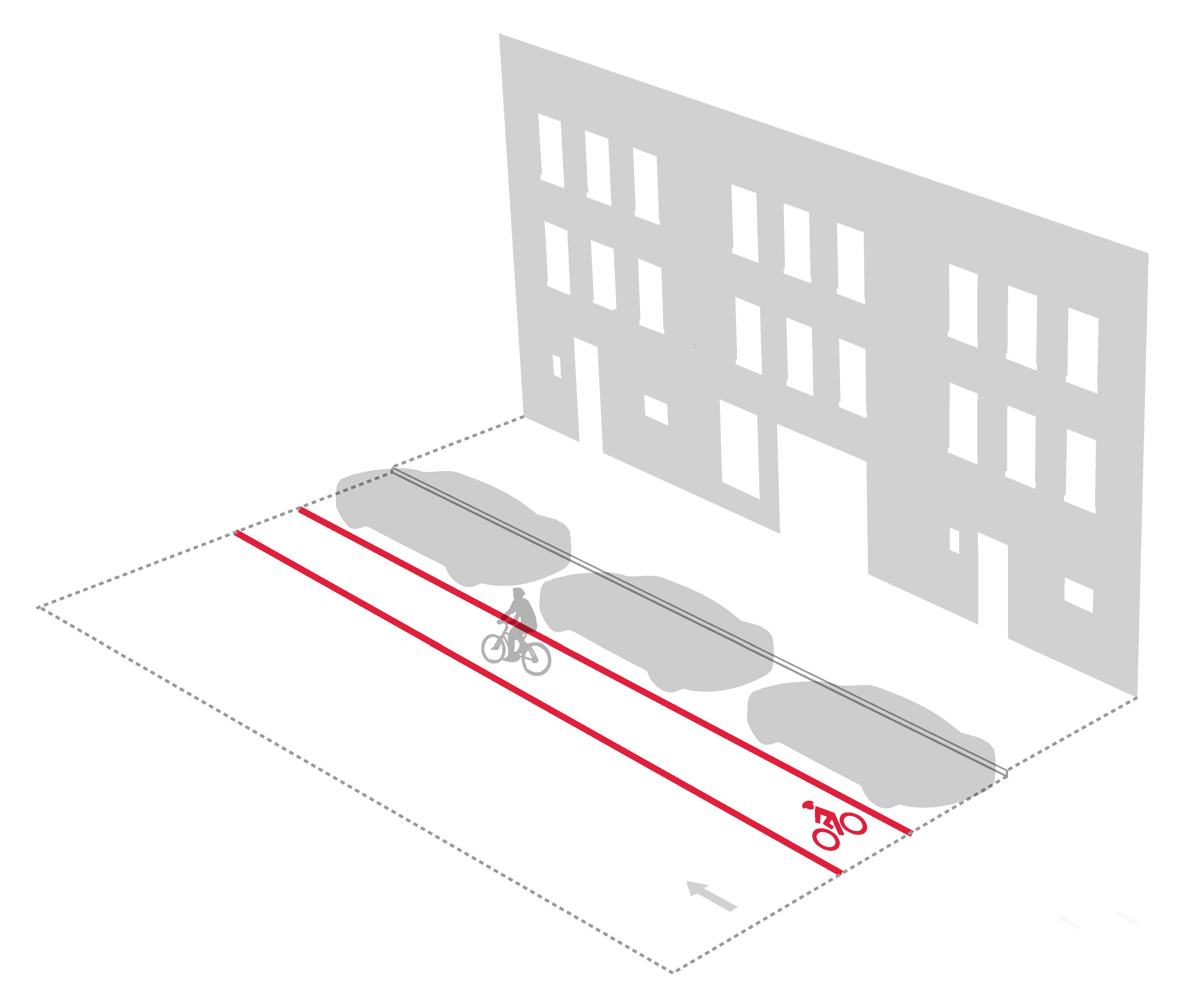 |
5–6’ standard |
- One- or two-lane street
- Excess road space
- Low potential for intrusion into bike lane
|
- Dedicated roadway space for cycling
- Preserves curbside access
- Simple implementation
|
- Vehicular intrusion possible
- Minimal separation from traffic
- Perceived as less safe than protected lanes
|
Standard if lane is adjacent to curb or between travel and turn lane (“pocket lane”)
|
| Shared Lane |
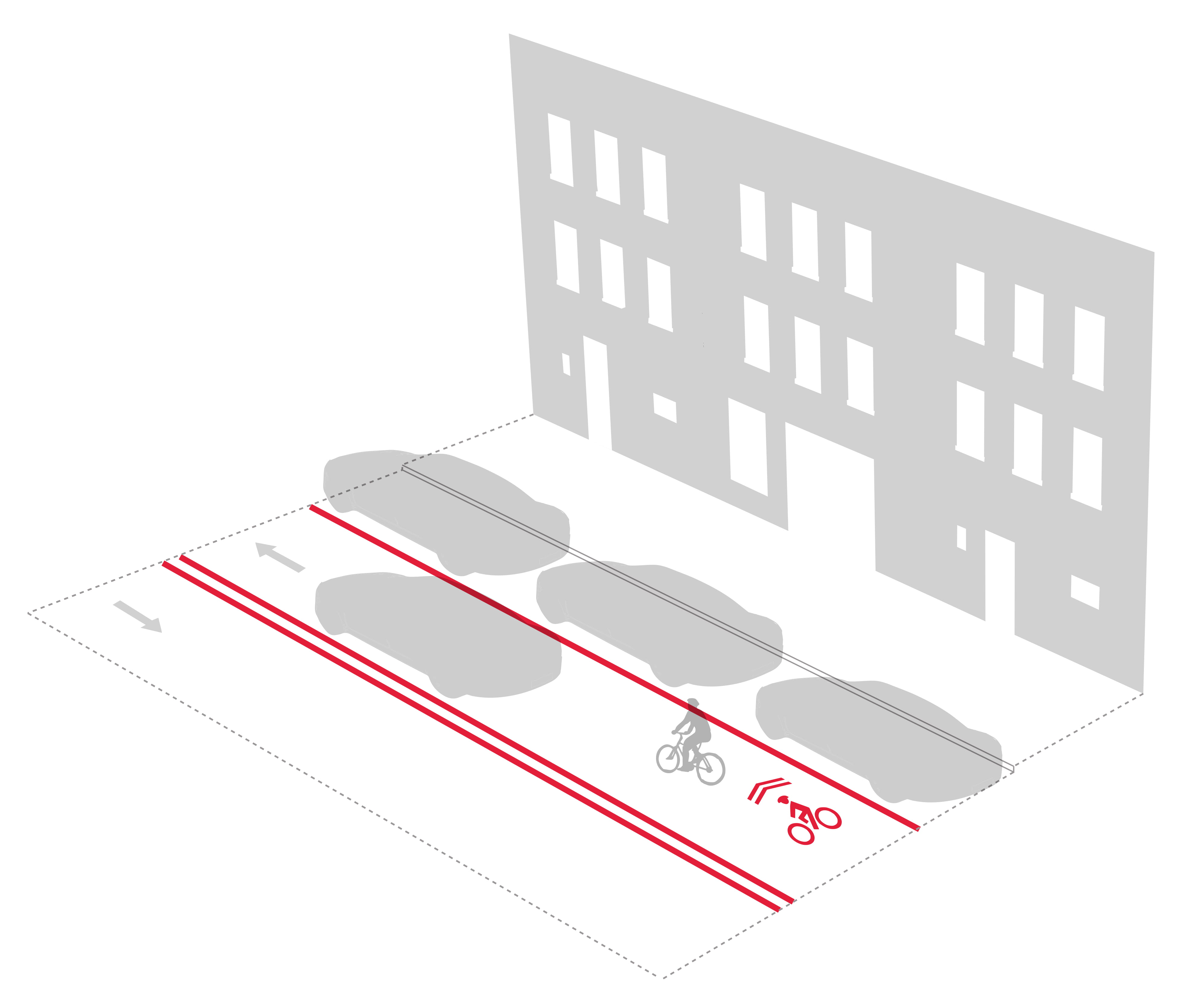 |
None |
- One- or two-lane street
- No excess road space
- Connected to other bike facilities
|
- Easy to follow bike route
- Heightens driver awareness of cyclists
- Preserves curbside access
- Simple implementation
|
- No dedicated space for cycling
- Cyclists not separated from traffic
|
Chevrons to indicate bike facility
|
| One-Way Protected Bike Lane |
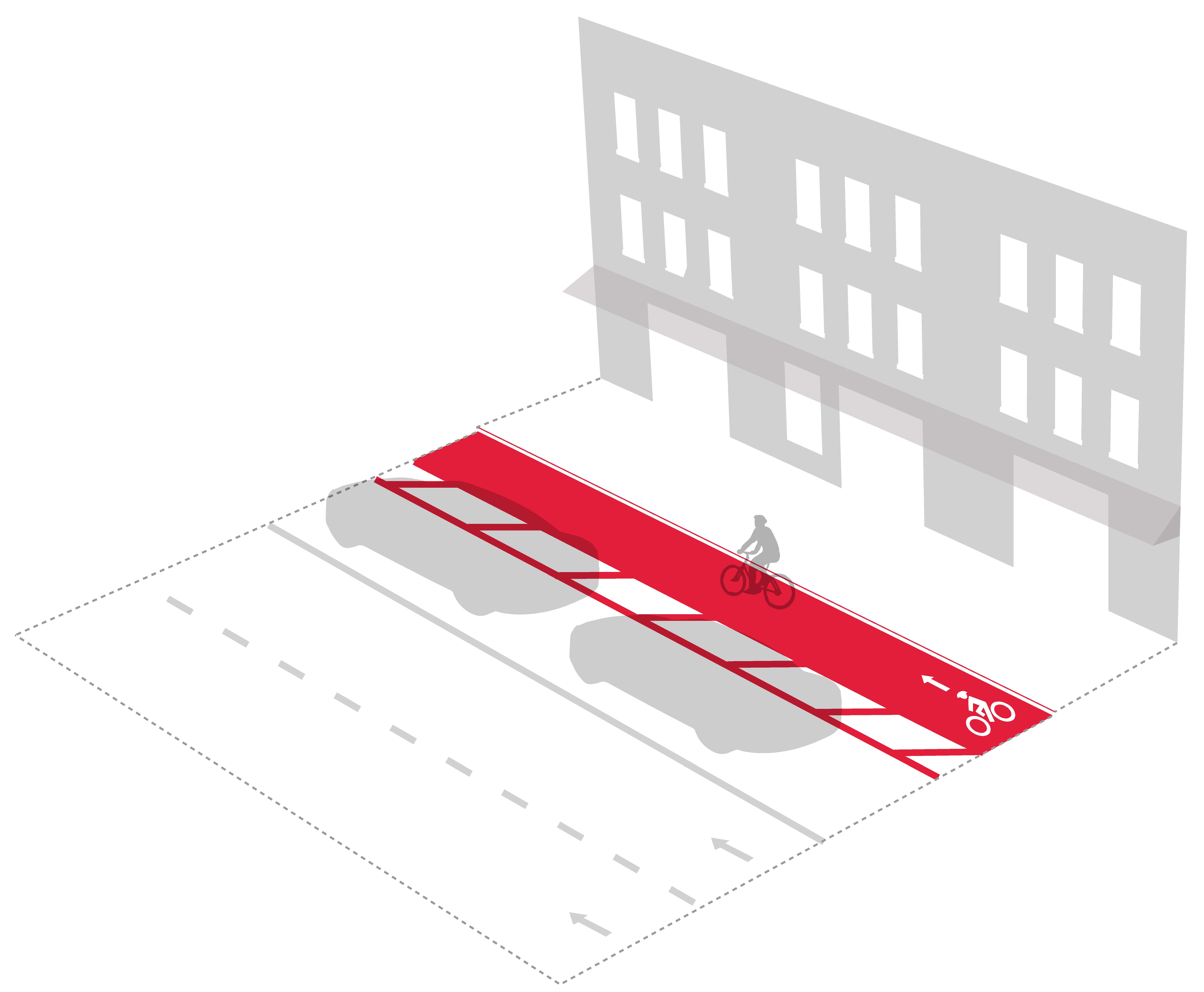 |
4’ min. lane + 3’ min. buffer (4’ min. buffer if no maintenance plan) |
- Excess road space
- Low-speed vehicular traffic
- High potential for bike lane intrusion
|
- Protected space for cyclists
- Safety benefits for all modes
- Allows pedestrian improvements like safety islands
|
- Parking/loading impacts
- Complex to regulate floating parking
- Signal timing issues
- Maintenance plans required at safety islands
|
Standard if parking turnover is high |
| Two-Way Protected Bike Lane |
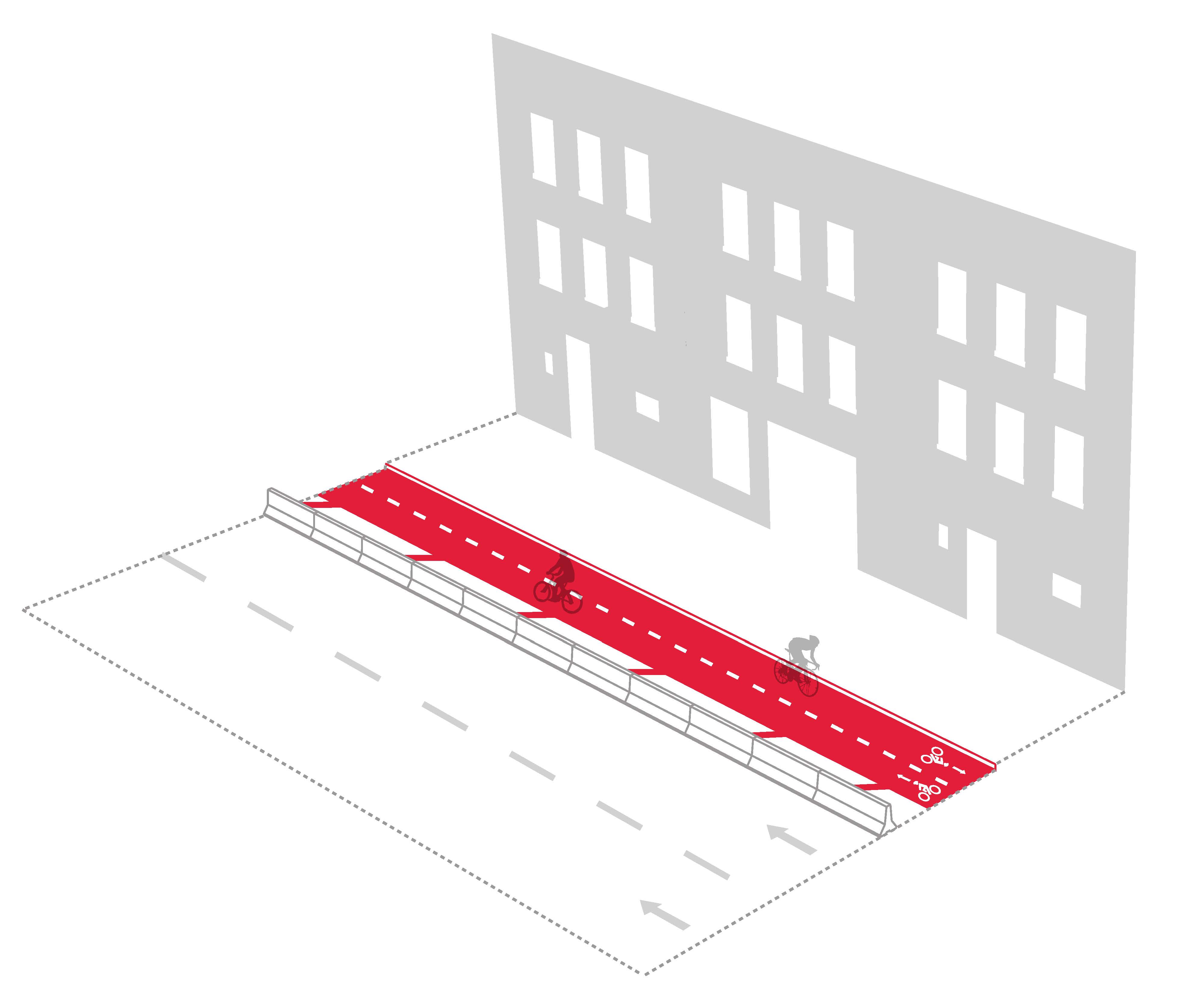 |
8’ min. (4’ per lane) + 3’ buffer (2’ if Jersey barrier used) |
- Favorable edge conditions
- Excess road space
- Adjacent to parks/waterfront
- Within industrial areas
|
- Efficient use of space
- Enhanced visibility
- Safer passing for varying cyclist speeds
|
- Parking impacts
- Signal timing and turn control needs
- Complex implementation
|
Preferred if exclusive to cyclists or in high pedestrian volume areas |
| Grade-Separated Bike Lane |
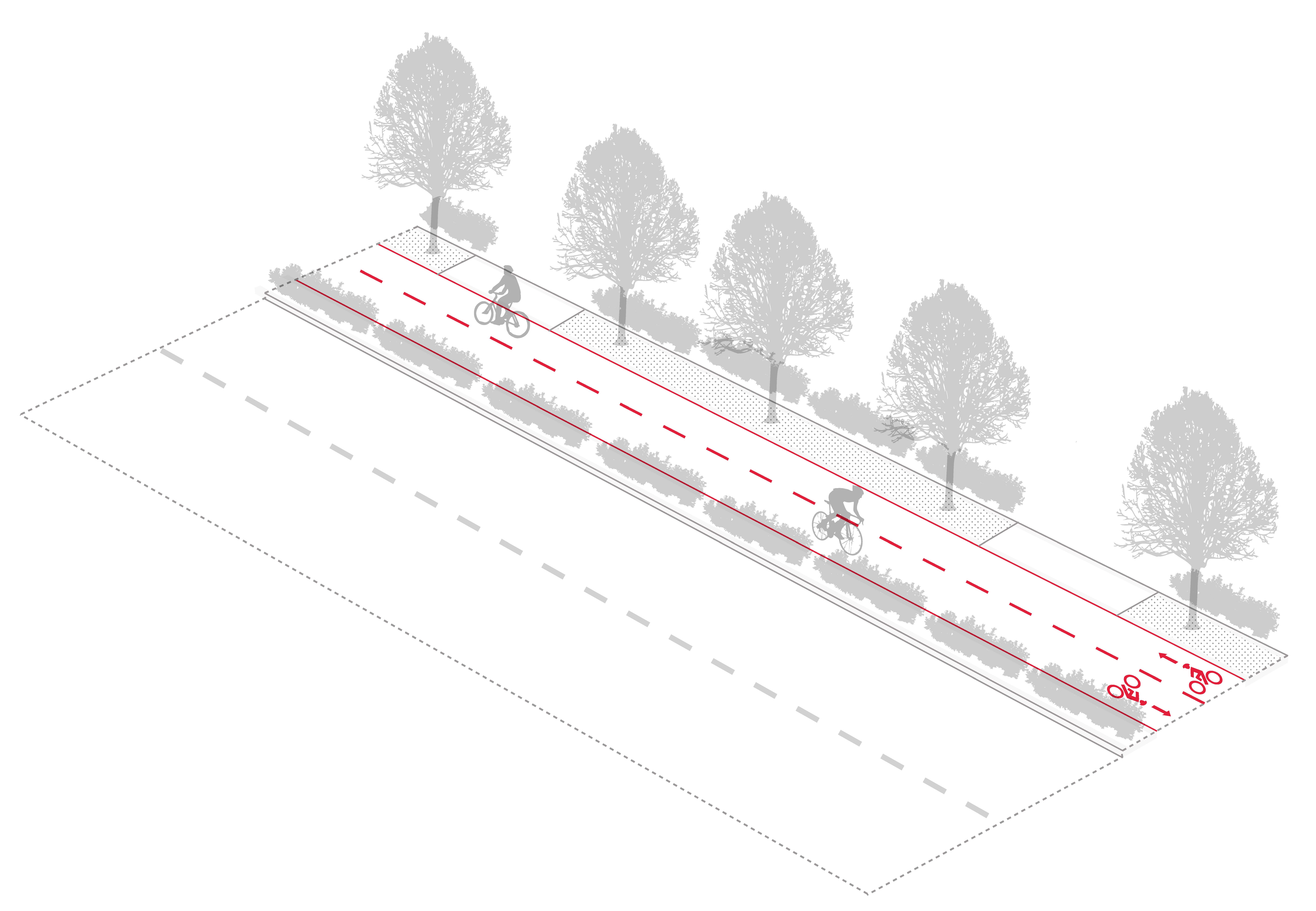 |
5’ min. one-way, 8’ min. two-way + buffer |
- Greenway segments
- Through parks/waterfront spaces
|
- Greatest safety benefit
- Connects inaccessible segments
- Preserves curbside access
|
- Often requires capital work
- Complex implementation
|
Not used with continuous vertical protection |